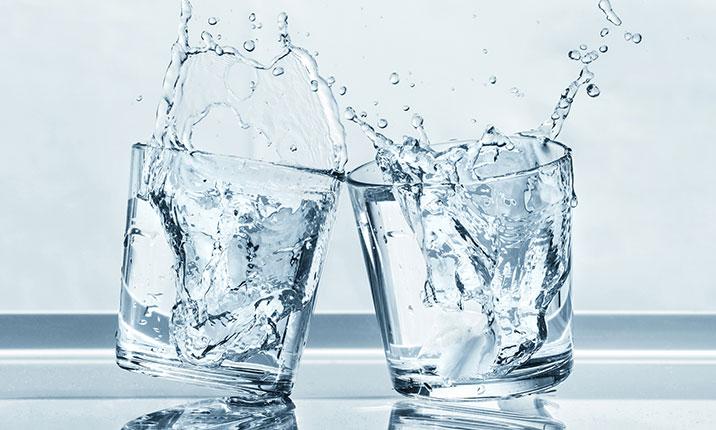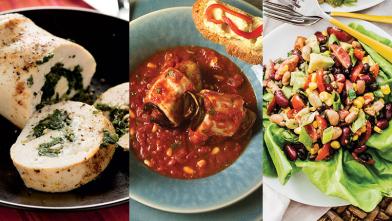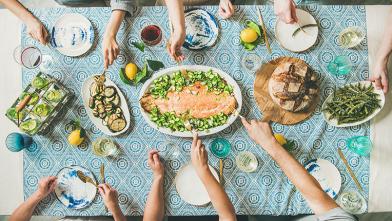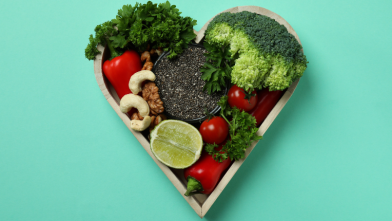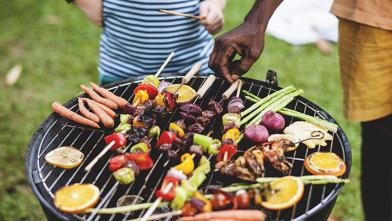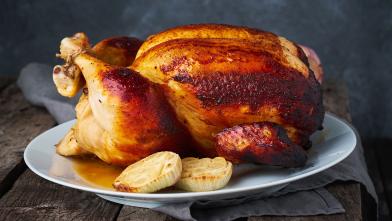Coffee, tea, soda, milk, juice, sports drinks, energy drinks, and sparkling water—there are so many choices when it comes to picking your drink! So, what’s the best choice for a person with diabetes? The same as what we recommend for everyone else, water!
Hydration is an important part of staying healthy. More than half of our body weight comes from water. It’s found in all our cells, organs, and tissues, and our bodies can’t function without it. We lose water throughout the day through digestion, sweating, and even breathing. It’s important to replace water that is lost by drinking plenty of fluids. But with so many beverage options, you might find yourself asking, “What can I drink?”
The best way for anyone to stay hydrated is to drink plain water! It’s exactly what our bodies need and doesn’t have any added sugar, calories, or sweeteners. It’s also easy to find and usually free.
Think Outside the Bottle
If you’re finding that plain water just isn’t satisfying your craving, try some of these sugar- and calorie-free options:
- Infused water: Adding a few pieces of fresh fruit and/or herbs to your water can give it a hint of flavor without added sugar or calories. Get creative with fruit and herb combinations like blackberry and mint, watermelon and basil, or lavender and lemon. Or try something with a little kick like apples and cinnamon, peaches and ginger, or strawberry and jalapeño. (Most of the time, adding a slice of fruit to water will not add very much carbohydrate or calories, unless you eat the whole fruit after it has infused.)
- Sparkling water: Sparkling water is a great substitute for soda when you are craving something bubbly. If plain sparkling water isn’t your cup of tea, you can infuse it with a slice of fruit or herbs (just like we suggested with plain water) or try any of the new flavored sparkling water options available in stores. TIP: Look for brands and flavors that have no added sugar and contain one gram or less carbohydrate per serving.
- Tea: If you think about it, tea is basically just infused water! Leave out the sugar and tea is another great zero-calorie drink choice that can be enjoyed hot or cold. If you are sensitive to caffeine, look for decaf versions of black and green tea or try a caffeine-free herbal tea like chamomile, rooibos, or peppermint. If you drink bottled tea, check the ingredients and look for options that have no added sugar and are low in carbohydrate (1 gram or less per serving).
- Coffee: Just like tea, plain black coffee has no calories or sugar. However, flavored coffees like lattes and many bottled coffees have lots of added milk and surprisingly high amounts of sugar, calories, and carbohydrate. Check the Nutrition Facts label on bottled coffee to find options that contain no or low amounts of sugar and carbohydrates. And at coffee shops, choose plain coffee without any milk, honey, agave, or sugar. Some coffee and tea shops offer unsweetened flavorings (cinnamon, cardamom or nutmeg), which don’t contain any low-calorie sweeteners, or sugar free syrups that contain low -calorie sweeteners.
Drinks in Moderation
Some beverages like milk and fruit juice can also be part of a healthy diet, but should be consumed in moderation.
Fruit Juice
While 100% fruit juice does contain many of the vitamins and minerals found in whole fruit, it also contains a lot of fast-absorbing carbohydrate which can cause your blood glucose (blood sugar) to spike.* If you do choose fruit juice, make sure it is 100% fruit juice with no added sugar, you drink the juice along with foods that contain protein or healthy fats to help slow the absorption of carbohydrate, and stick to small portions of juice. 1/2 cup or 4 ounces (usually the size of a kid’s juice box) is the recommended serving size for 15 grams of carbohydrate.
Fresh or frozen whole fruits, or canned fruit in its own juice or water, is the best way to get more servings of fruit and a better option than fruit juice because it is a greater source of fiber that helps you feel fuller, aids in digestion, and may help manage blood glucose. These fruit selections can be part of the quality carbohydrate section of the Diabetes Plate.
*While fruit juice isn’t a great choice for hydration, it can be helpful for treating low blood glucose (hypoglycemia) as it quickly raises blood glucose levels.
Milk
Milk is a great source of nutrients like protein, calcium, and vitamin D which are important in promoting bone strength. However, milk also contains calories, carbohydrates, and sometimes saturated fat. Choose low- or non-fat milk without added flavor or sugar. If you prefer non-dairy milk, like soy, almond, or oat, look for unsweetened varieties. The recommended serving size for milk is 8 ounces, which contains 12 grams of carbohydrate, 8 grams of protein, about 100 calories, and about 1/3 of the calcium you need in a day. Milk can be used as your quality carbohydrate section of the Diabetes Plate.
Beverages to Limit or Avoid
Any drinks with added sugar like sodas, sports drinks, energy drinks, and sweetened tea and coffee are best avoided. This is because the sugar in these beverages can cause spikes in blood glucose and the added calories can contribute to weight gain.
Other drinks to limit:
- Diet drinks made with artificial sweeteners are a better choice compared to sugary drinks like regular soda but should still be consumed in moderation. While they do not contain sugar and can help with blood glucose management if they are replacing sugary drinks in your eating plan, they can also help to reduce calories in your meal. Regular soda can raise blood glucose levels quickly.
- Alcoholic beverages. Alcohol can influence blood glucose management by causing low blood glucose (hypoglycemia), delayed low blood glucose, or high blood glucose (hyperglycemia), and weight gain from the carbohydrate and added calories in the drink. The American Diabetes Association recommends monitoring blood glucose levels more often when drinking alcoholic beverages.
Don’t forget to check out Diabetes Food Hub for more diabetes-friendly ideas and recipes for hydrating drinks and foods!
